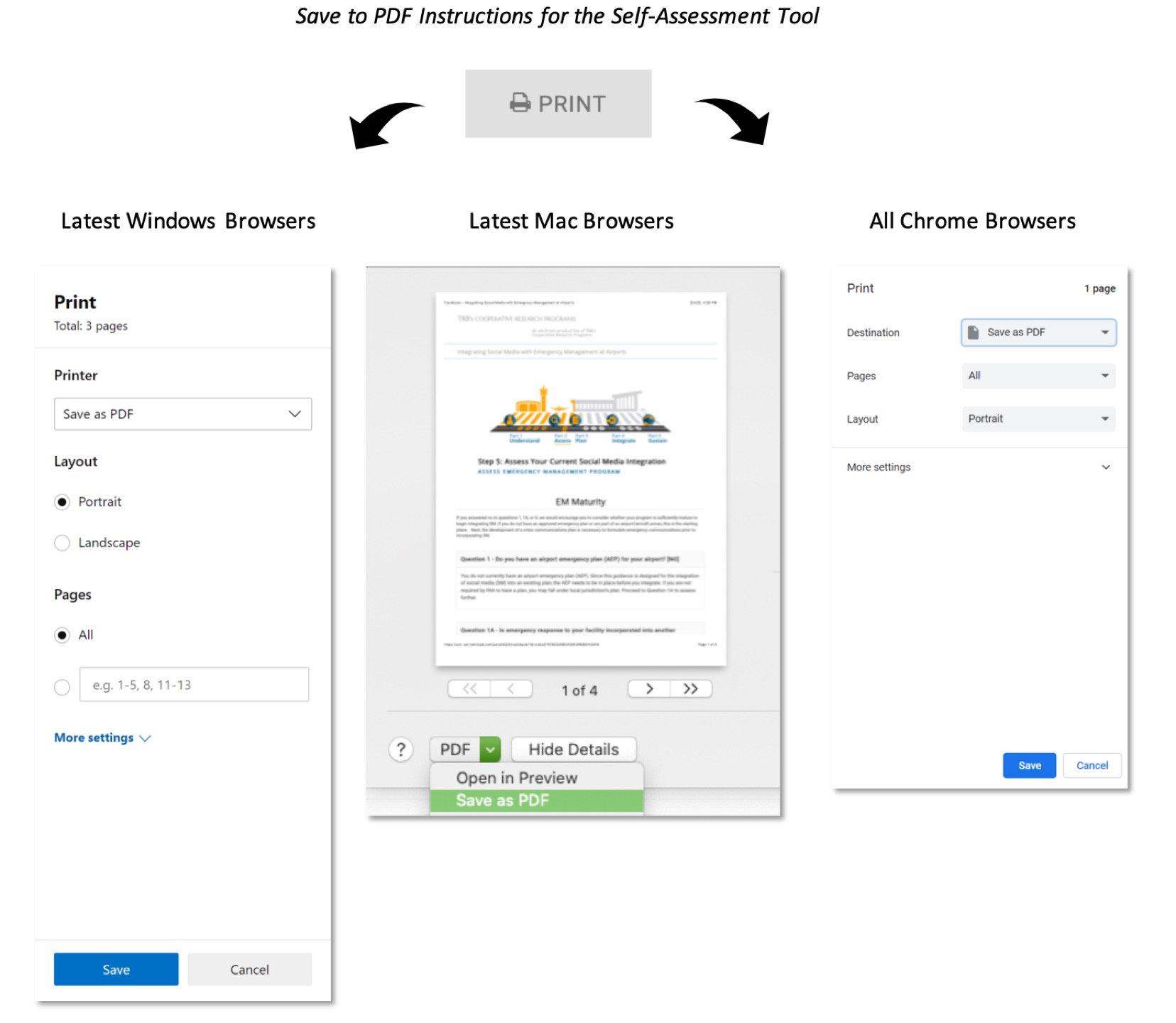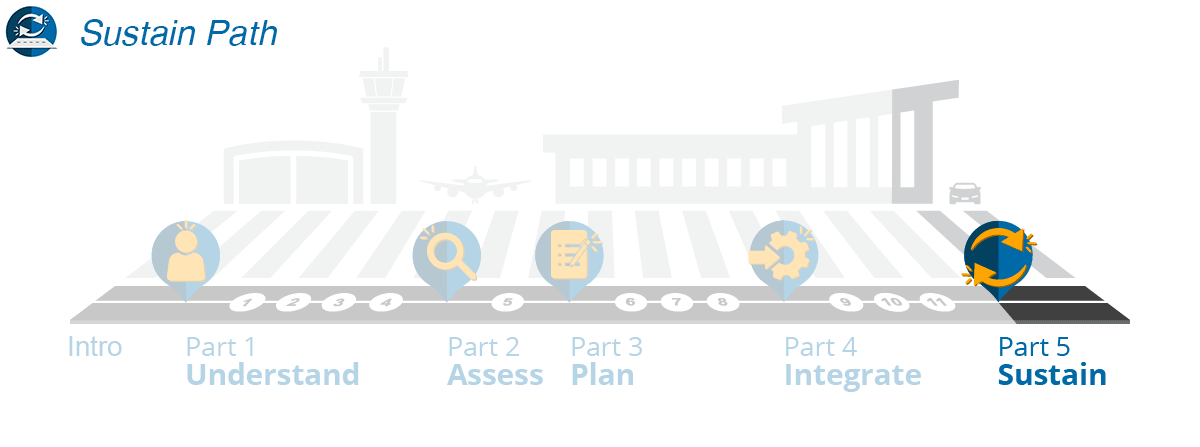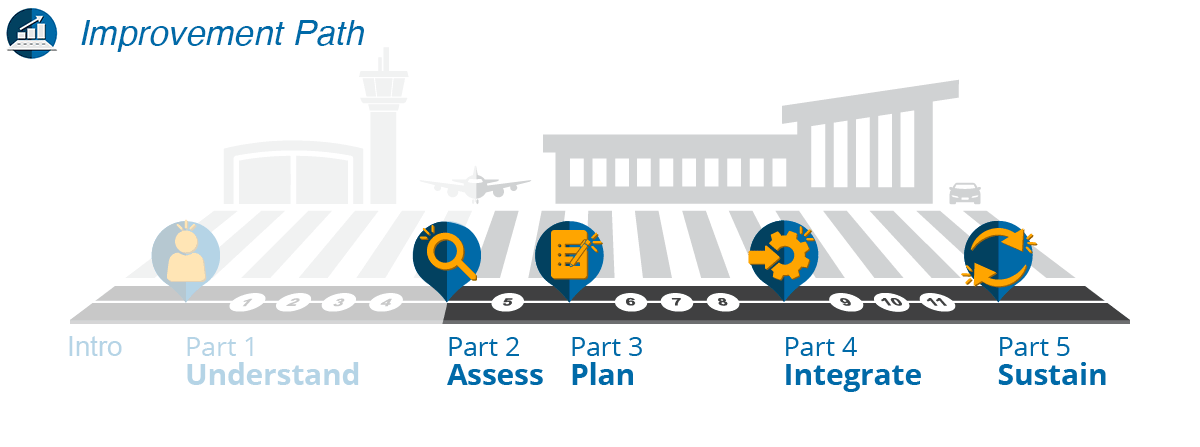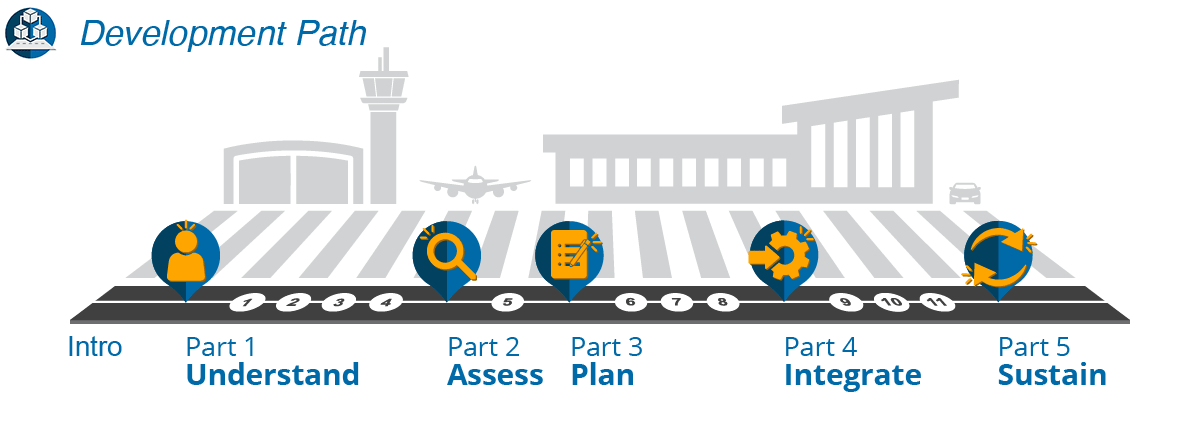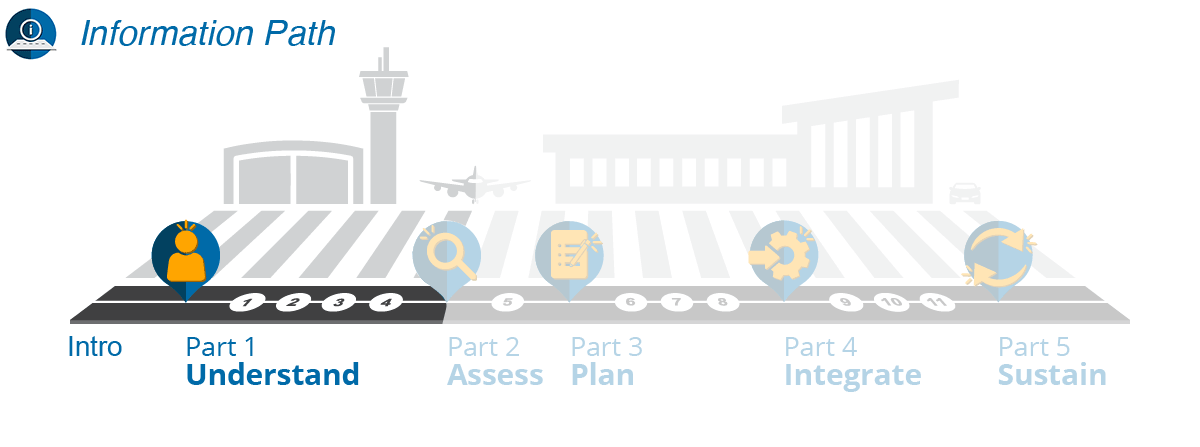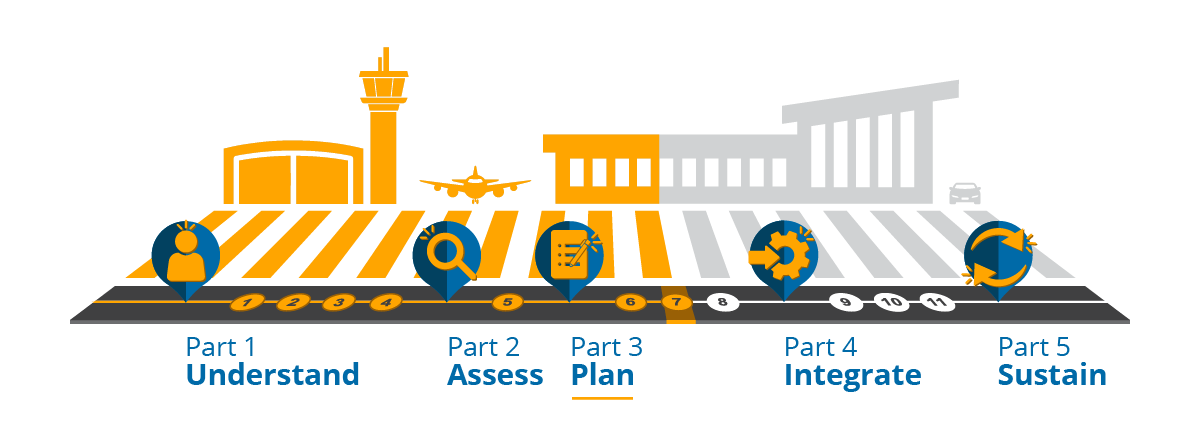
Step 7: Collaborate and Establish Your Vision and Objectives
Develop a Shared Vision
Once you have defined the key SMEM community and conducted a risk assessment, your focus should turn toward casting a vision for what SMEM looks like at your airport. Developing a unified vision for an SMEM program requires leadership and collaboration. As the champions, the SM and EM managers should lead this effort, working with the airport community to come up with a shared vision.
As you build your vision, you can use the worksheet titled, “Vision, Goals, and Objectives Worksheet” in the “SMEM Program Worksheets” file. If you have not yet downloaded this file, click the link below.
Determining Your Vision for the Integration of Social Media with Emergency Management
It is important to clearly determine your unique vision for SMEM and what you want that integration to accomplish in a practical sense. Your vision is a statement of what you want SMEM to look like in the future, and it should drive your long-term goals. Your vision should fit in with who you are as an airport, your culture, and your relationships with others. As you develop your vision, consider the following factors:
- Airport Operational Profile (e.g., commercial service, cargo, general aviation, military, etc.): your airport profile will help identify what level and type of interaction you may expect.
- Volume of Aircraft Traffic and Number of Passengers: these numbers will influence the resources needed for listening and engaging; generally, the higher the numbers, the more resources you will need.
- Risk Factors: determine high-risk items and assess your ability to mitigate them.
- Number of Employees/Staff on Airport: generally speaking, higher staff numbers may afford you the ability to train more backup personnel for extended operations.
- Depth of Skills and Knowledge of SM Staff: knowing the current abilities and the availability of training is key to what you can accomplish.
- Community Emergency Response Partnerships: determine whether you have the ability to augment your staff with trusted volunteers.
- Surrounding Community Profile: knowing the characteristics of your community and their level of engagement with SM can help determine what level of engagement you will need.
- Proximity (e.g., places of public gathering, significant infrastructure, etc.): issues at key facilities may drive your plan to go deeper. If there is a major incident at a facility, it may impact operations or access to your airport.
If you have never developed a vision statement or if you desire to gain a deeper and more comprehensive understanding about the visioning process, you should look to additional resources on how vision statements and vision descriptions are generally created. The following is an example of such a resource:
"Phase 2: Developing Strategy,” OnStrategy, accessed September 16, 2019, https://onstrategyhq.com/resources/developing-your-strategy/ .
This resource provides valuable insight, as it also addresses how mission statements, strategies, and tactics relate to developing a vision. Although this resource is not specific to SMEM, the principles presented are applicable to any organization. It would also help to research the vision statements of the Federal Emergency Management Agency (FEMA), and other local, regional, and federal emergency management entities to get an idea of how these statements are worded.
Identifying Points of Integration
When establishing a vision for SMEM, you should also consider all the elements that are needed to reach that vision. This will ensure that even though your vision is a long-term aspiration, it is based on challenging, yet achievable expectations. Figure 7.1 shows five points of integration.

Figure 7.1: Points of Integration
- Shared Understanding of SMEM and Associated Benefits: the level of desired understanding between SM and EM professionals regarding how SM can be used to support emergency response. (See Step 2 for more information on the uses of SM).
- Policies, Agreements, and Procedures: the sufficiency, depth, and detail of the policies, agreements, and procedures that exist to support the integration of SM into emergency operations. This includes supporting checklists, templates, and other useful operational items.
- SM tools and Personnel Resources: the level of the resources provided from a tools and personnel perspective to ensure support of effective SM use. Information in the SM Tools part of this WebResource and the results of your assessment using Self-Assessment Tool will guide you in choosing effective tools.
- SM Training: whether initial and recurrent training on SM and EM functions will be provided and the depth of the training necessary. This includes training updates to stay abreast of emerging trends and changes in SM.
- SM Drills/Exercises: the drills, exercises, and other testing of SM policies, agreements, procedures, tools, and personnel to ensure their effective application during a real emergency. This includes incorporating lessons learned.
Understanding these five points of integration will help you assess and subsequently define which of the three levels (basic, intermediate, or full) of integration you will choose to initially implement (see Step 8 for a full definition of these levels).
Conclusion
Deciding on a vision for SMEM is a critical step in building an action plan for moving forward. You may set a vision for a full integration level with proactive listening and publishing including coordinating and reporting to stakeholders; however, your current resources (staff, tools, etc.) may only provide the ability to do basic listening and publishing. If this is the case, you should align your goals and objectives with your vision and provide an incremental and strategic approach for achieving that vision. In developing your vision statement, ensure you are collaborating with the whole community, as identified in Step 6, so that your team sufficiently considers the integration points and factors.
When looking to implement or expand SMEM, it is easy to become overwhelmed. As noted earlier, we highly encourage you to take the “Do 1 Thing”1 approach, introduced in Step 1. If you are a small airport, your first task may be to make connections with your local EM department to have initial discussions toward developing a basic plan. Wherever you are in the process, after reviewing resources, develop your own checklist for building an SMEM program.
Interviews with various airport operators and their stakeholders have shown that SM and EM individual plans often run in parallel to each other. Although they are not necessarily in conflict, there is typically no direct, detailed connection between the two. To mitigate this issue, the next step in the process is for the champions to work with the stakeholders to develop realistic, measurable, and attainable goals and objectives. You should tie these goals and objectives directly to your vision and to both the EM and the SM plans.
REFERENCES
- “Do 1 Thing,” Do 1 Thing, accessed September 13, 2019, https://do1thing.com/.
